1977 was a big year for science fiction. The unprecedented success of Star Wars made the genre more bankable than it had ever been, and studios jumped at the chance to take advantage of this appetite for all things sci-fi.
Paramount looked to Star Trek, and within two years Star Trek: The Motion Picture had revived the franchise. Meanwhile, television writer and producer Glen Larson saw the perfect opportunity to revive an old idea of his, called Adam’s Ark. It was influenced in part by Erich von Däniken’s Chariots Of The Gods (1968), which hypothesised that ancient human civilisations may have been gifted technology by aliens, as well as elements of the Mormon faith.
Somewhere far off in the universe, 12 colonies of humans migrated from the dying world of Kobol and found new planets to populate. For 1,000 years, the colonies have been at war with a mechanical race known as the Cylons, who offer humanity peace only to spring a trap with the help of their power-hungry human liaison, Gaius Baltar (John Colicos). The colonies are wiped out, as is most of the Colonial Fleet save the Battlestar Galactica under the command of Admiral Adama (Lorne Greene), now leader of a ‘rag-tag fugitive fleet’ on a quest to find the fabled 13th Colony – Earth. They set a course into deep space with limited resources, fleeing the Cylons and looking for clues to the whereabouts of Earth.
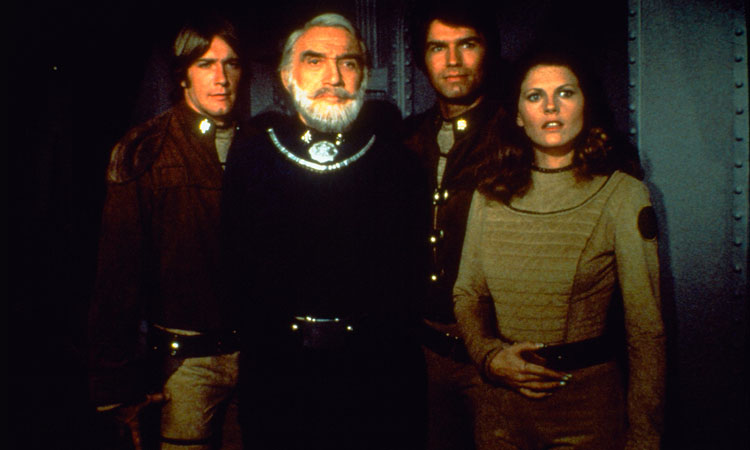
The series was fast-tracked into production, shot at Universal and aired on ABC in September 1978. We spoke the show’s lead actor back in 2014, the late great Richard Hatch, who played ace pilot Apollo, who said he turned down the role at first: “I had turned down the audition because I just loved Star Wars, and I thought this was maybe going to be a cheap rip-off. Then 12 months later they couldn’t seem to find the Captain Apollo that they wanted, and Glen Larson had seen me in Whatever Happened To The Class Of ’65, and thought I was perfect.
“So here I am, a starving actor, and he’s taking me out to wine and dine me, trying to convince me to be part of the biggest, most expensive production in TV history, which every actor in Hollywood wanted to do. I found myself in what we call the ‘magic hour’ where they had to make a decision, and they offered me the role. I was surprised – I didn’t expect them to hire me.”
Production was such a whirlwind that he was given the part on the same day he had to arrive on set. “The minute my agent called me, I had to jump in the car, and within an hour I was on set getting ready to shoot. I’ve never been so overwhelmed by a production. I had no idea it was this big or important, and I truly was terrified. And my name was at the top – I thought, ‘How do I live up to these expectations?’ So it was a pretty scary, terrifying day, but I got through it, and after meeting Lome Greene all was well. Dirk Benedict (Starbuck) and Herb Jefferson Jr (Boomer) and I bonded quickly – and the rest is history.”
Captain Apollo and his companions Starbuck and Boomer were Viper pilots – the critical line of defence between the Colonial Fleet and the Cylons. On the bridge. Admiral Adama (Greene) commanded the Galactica with the support of Colonel Tigh (Terry Carter) and his daughter Athena Adama (Maren Jensen). Athena’s rival for Starbuck’s affections was medical officer Cassiopeia (Laurette Spang), and Anne Lockhart joined the cast midway through the season as Battlestar Pegasus Viper pilot Sheba.
The pilot was three episodes long, essentially a made-for-TV movie. Larson had wanted to make a miniseries, but ABC pushed for a weekly show, cutting lead time significantly. It was a hectic period, and hype for the new series was massive, according to Hatch: “It got the largest audience in TV history for a sci-fi show. 65 million people watched the pilot. An aircraft carrier admiral once told me that they brought their ship into port just so that they could pick up the signal to watch it. It was an amazing time.”
Every show needs a great villain, and the Cylons were menacing foes. Larson had envisioned them a reptilian, but the network wouldn’t allow real creatures to be killed off so frequently in prime time. The Cylons therefore became robots, created by a reptilian civilisation which, so Baltar states, was overwhelmed by its own technology and died out.
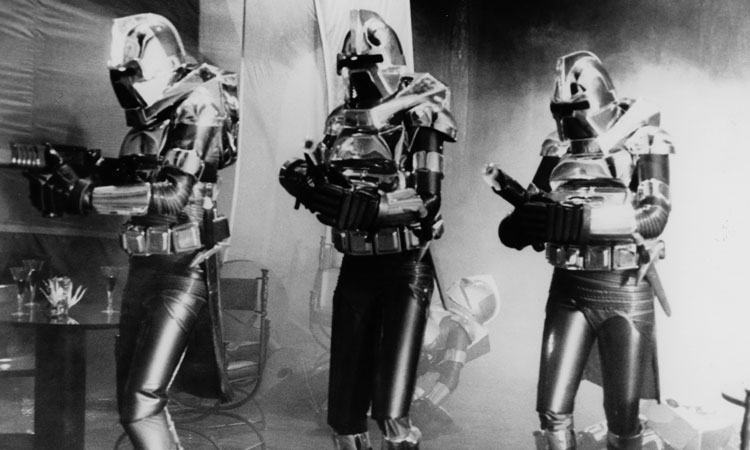
Legendary illustrator Ralph McQuarrie designed concept artwork for Battlestar, including a first draft of the Cylons’ appearance. His vision was a little more akin to a surgical droid from The Empire Strikes Back (1980). Artists Andrew Probert and Joe Johnson then created new designs for the mechanical menace, with Johnson incorporating elements of Samurai armour into his, while Probert took inspiration from Greek warriors, including a skirt and a sword.
Probert’s look triumphed, including the iconic red eye that oscillated back and forth, coupled with remarkable sound design by Oscar-winning sound editor Peter Berkos. He used a vocoder in tandem with a synthesiser, and a single actor portrayed all the Cylon voices to keep the sound consistent and monotone. Stunt performers, and occasionally football or basketball players, were hired to make the Cylons every inch the imposing threat they were written to be.
Battlestar Galactica didn’t just draw on science fiction iconography; it was also inspired by antiquity. The names of the colonies, like Caprica, Piscera and Sagitara, were pulled from the signs of the Zodiac. The Viper pilots’ helmets were inspired by Egyptian headdresses, call signs like Athena and Apollo were taken from Greek mythology, and exterior shots set on Kobol were even filmed on location in Giza. The look of the show was distinctive, which Hatch said he holds dear: “I have a particular love for the design of the original show because it was very unique, iconic and cool. There was something very cool about those jackets, and I loved the Egyptian and Mayan motif that was woven throughout. I love the look of it and the visual aspects of it. John Dykstra was the special effects supervisor on Star Wars, and was ours when we started, so he also was able to bring a lot of very powerful visuals and dynamics, which had never been seen before on television.”
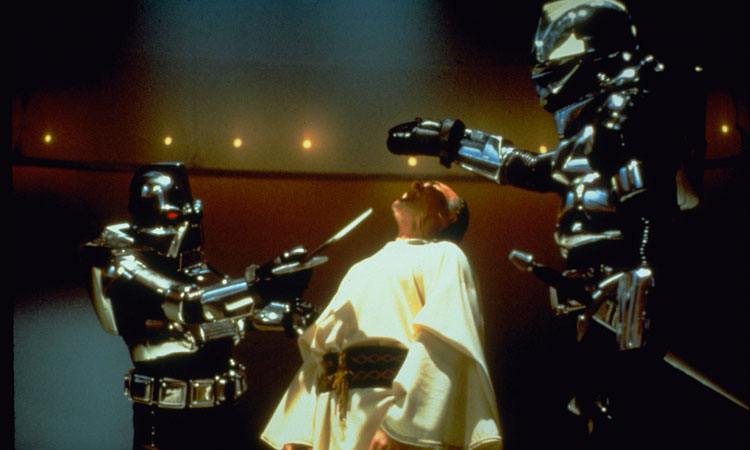
The back story was also very dark: 12 planets are wiped out, with the few survivors left on the run, and chasing what could be a myth. Star Wars might have had a fascist Empire, but Battlestar Galactica was about the very extinction of humanity. And yet, the show was unbelievably upbeat and hopeful in the face of this predicament – almost jarringly so. Hatch said he believed that the bonds he and his co-stars formed on set helped set the tone for the series.
“There’s a lot of infighting on sets or competition, as actors want more screen time. But on Battlestar we formed a family, and I love projects that deal with that. This was about an extended family surviving a holocaust. It was a powerful, dramatic story that showed people pulling together, watching each others’ backs and somehow surviving the impossible.”
Likewise, the cast and crew faced a near-impossible task in bringing the show to life. The 18-month shoot on the backlot of Universal saw the actors filming for almost seven days a week, sometimes for 16-hour days. The man who held them all together was Lorne Greene, the Canadian actor who played patriarch Ben Cartwright in long-running western series Bonanza.
As his on-screen son. Hatch spent a lot of time with Greene, and appreciated his composure. “I grew up watching Bonanza, so getting to play his son – I mean, wow. Lorne Greene was such a down-to-earth, genuine human being, and he was the most experienced actor there – he was the captain of the ship. Lorne set the tone; nobody was going to pull rank, nobody was going to play games or manipulate to get more screen time. It was all about us coming together, and he orchestrated that.”
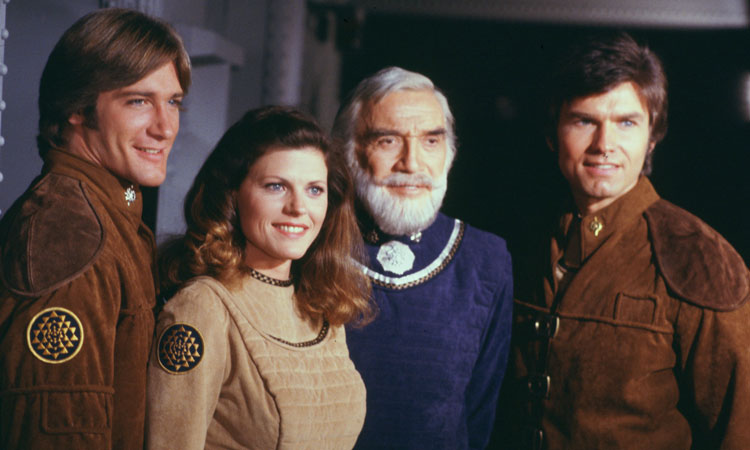
Episodes ranged from gunslinging western stories ‘The Lost Warrior’ and The Guns Of Navarone-inspired ‘The Gun On Ice Planet Zero’ to disaster mini-movie ‘Fire In Space’ and murder mystery ‘Murder On The Rising Star’. Some worked and others didn’t, but the stories were ambitious to say the least.
When rival network CBS rearranged its Sunday night line-up, Battlestar Galactica found itself up against All In The Family, and understandably failed to topple the established sitcom in the ratings. The show’s expensive budget spelled trouble, and it ended after 24 episodes with ‘The Hand Of God’.
Fans were furious, but Hatch said he wasn’t entirely surprised. “We were taking almost 10-12 days per episode where a normal show takes seven, so it was a very challenging production. I think part of why Battlestar didn’t continue at that time was because the budget was so huge and it took so long to film. They were trying to make a movie each week. Technology was not at that point yet, but it was a very heroic year, and other channels did their best to bring us down. Nevertheless, we were probably the highest-rated science fiction show of all time in terms of numbers and what we accomplished.
“In those days sci-fi wasn’t as accepted as it is now, and they weren’t used to dealing with those kinds of volatile budgets that a space show sometimes brings. Today, the industry recognises that sci-fi is one of those rare genres that seems to build an audience over time instead of diminishing. Star Trek became a big hit in syndication, and Battlestar has increased its fanbase every year from generation to generation.”
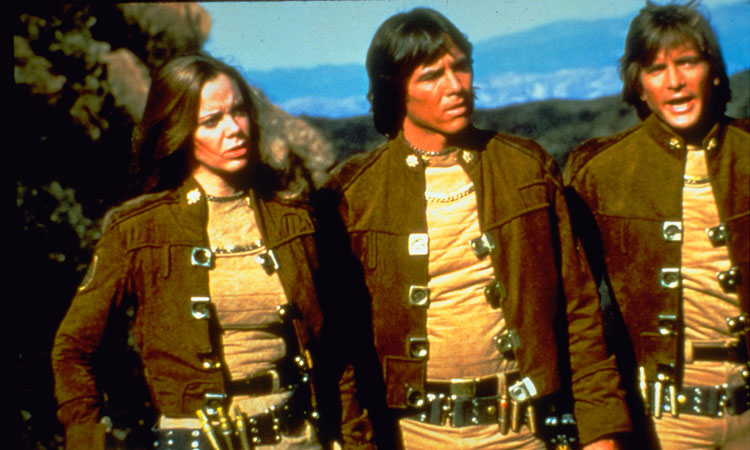
ABC quickly approached Glen Larson to revive the show, and so Galactica 1980 was born. Adama and Boomer were the only original characters to return, however, and the series tanked after just ten episodes, failing to capture the excitement of its first season.
In the Nineties, Hatch tried to revive the series himself, even creating an action-packed trailer called ‘The Second Coming’, featuring original cast members John Colicos and George Murdock (Dr Salik). “I’d been pitching to [Universal] about a new series, but they were a little confused about how that might look. So at a time when nobody was doing trailers – because if you made a trailer it’s because you already had a movie – I went out and put one together. We played it at Comic-Con and got an eight-minute standing ovation. We got a call from Harvey Weinstein at Miramax thinking that if we had the trailer, we must have the movie. It helped reinvigorate the fanbase.
“Bryan Singer and Tom DeSanto at one point got a deal to do it, but that got dropped when they had to go work on X2. And then ultimately Ron Moore got involved and made the reimagined series with that wonderful cast. I invited him, Glen, Tom and Bryan to a convention up at Universal to talk to the fans about what they wanted to do. We had this big room where Ron played the new series trailer, and it was so different from the original that the audience was incredibly cold at that moment.”
Very few shows enjoy a second chance, but Battlestar Galactica returned as a miniseries in 2003, and was picked up as a full series in 2004, running for four seasons to critical acclaim. Characters like Apollo and Boomer were back, but with a twist, the most notable being Katee Sackhoff’s role as Starbuck, reimagined as a woman.
The new series had an even more diverse cast and took that dark back story to a grittier place than the original show could for its time slot and era. Hatch was invited to join as guest star Tom Zarek – a role about a million miles away from the clean-cut Viper pilot he first played back in 1978.
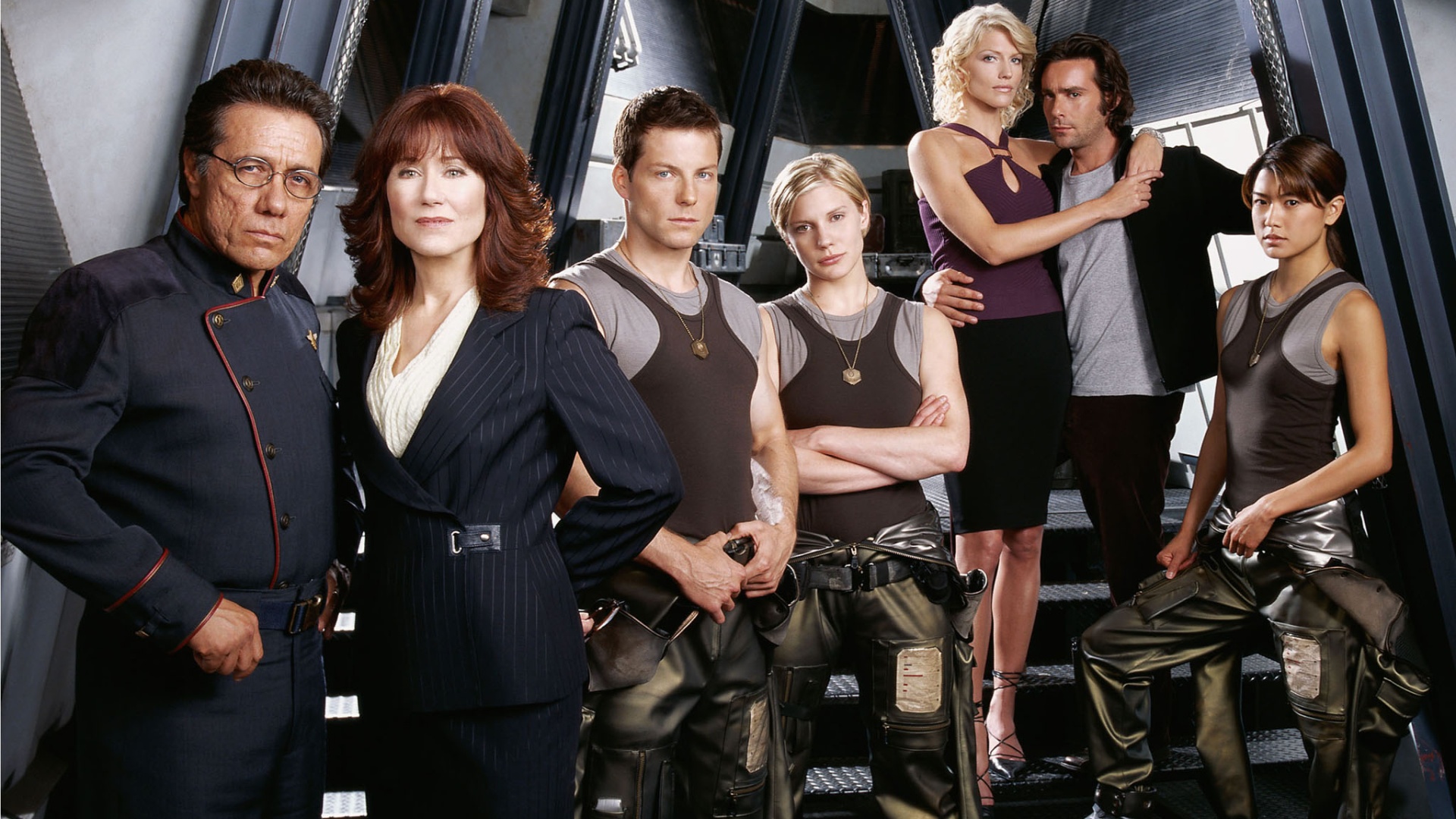
“Even though it was very different, there was a vision. Here was somebody that knew what they were doing and had a really clear vision of where he wanted to take it, and I was really impressed. I got to know Ron and he said to me: ‘The series has been picked up and I have one-time spot here, but it could turn into an ongoing part, and it’s the role of Tom Zarek – a political revolutionary’
“I couldn’t believe they were actually inviting me to come on the show but I loved the role. Every step created the next miracle. That convention, getting to know Ron, him taking a chance on me and letting me come in and play one of my favourite roles of all time. Zarek is an enigmatic and complex character – most of the characters in the new series were never black and white; they were morally conflicted characters, which is what made that show get the critical acclaim it did.”
Despite the cheesy dialogue and feathered hear, Battlestar Galactica was a show about survival, family and hope. For a series with so few episodes, it has seeped into pop culture so completely that the mere mention of a ‘Cylon’ invokes memories of that voice dispassionately saying “by your command” as well as the iconic designs of the uniforms and ships.
“The original show wasn’t as dark or political or edgy,” said Hatch. “It was more about family and it was a show that the whole family could sit down and watch together. This was humanity going through the most intense, challenging, life-and-death circumstances, and to this day they’re discovering it and falling in love with it. I feel very blessed because you can be in a lot of shows that are forgettable. They’re entertaining at the time, but you forget them, but for whatever reason, Battlestar’s heart and energy touched people deeply
“There’s never been a one-year series that’s made that kind of powerful impression or lasting impact. We’re all fans of something and when you’re a fan you just want more of it. It’s amazing when people come to us and tell us their stories about what the show meant to them and how it helped them get through challenging times in their lives. How often do you get the chance to be part of something like that?”
You can currently watch Battlestar Galactica on the Horror Channel. Click here to find out more.
